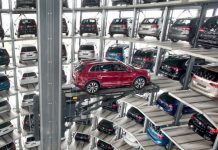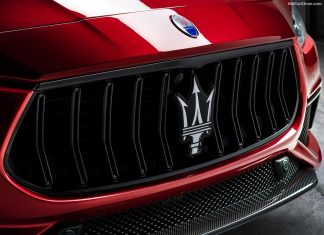Think about the things you can now purchase online that you couldn’t twenty or even ten years ago. From grocery shopping to operating systems and so much more, there are now few items you cannot purchase online quickly and easily.
There are only a handful of areas that have resisted quick digital transformation. Because of the significance, cost, and complexity of purchasing cars, they were among the last holdouts.
The Automotive industry will experience significant consumer-driven disruption over the next decade. Recent success stories like Carvana show, things are changing fast in the automotive ecosystem and online car shopping and buying is just the beginning.
Star’s automotive and mobility experts examined the critical areas defining the industry’s next 5-10 years in the new article “Innovating Automotive Retail: the 5 biggest challenges shaping the future”. Now’s the time for industry players to adopt strategies that embrace these new models and brand visions to be competitive in the ever-evolving automotive space.
1. The completely digital purchase
Many buyers naturally wondered for years why it was possible to purchase just about everything online except for their cars. Much of this has to do with the complexity of dealership laws in the US and the traditional sales pipeline.
However, OEMs, dealerships and other retailers have now made this reality in a variety of forms. One of the most innovative has to be Ford’s partnership with Alibaba to create a “car vending machine.”
Using the Alibaba app, customers can select a car, pay a deposit, and schedule a time to collect it. Then using facial scans, they can collect the car at the vending machine and start a 3-day test drive. If they liked it, they could purchase the vehicle or swap it out for another. The entire process was unmanned on the retailer side—though drivers could go to participating dealerships to find out more.
The result is 100% convenience for the customer without the traditional pressure one feels at a dealership. Instead, Ford lets their vehicles proudly speak for themselves.
2. Hybrid approach: start buying Online – finish offline
The ever-popular used car chain CarMax has shaken up the buying process. They’ve brought together the offline and online customer journey to balance the two offerings.
Now customers can complete up to 90% of the process online. They can even order a test drive from their home. After deciding on a vehicle, they can either pick it up at CarMax or have it delivered to their where a sales associate will finish the purchase.
CarMax has effectively recognized both the opportunities and limitations for both offline and online approaches and tied the threads together. For example, if you start a purchase at the store, you can finish online or vice versa without restarting the process. Once again, digital delivers flexibility and convenience empowering customers in the process.
3. Personalization
If there is one word to focus on, it’s personalization. Digital has enabled personalization wherever the consumer is. Whether the customer journey is 100% online, offline, or some combination, personalization has become an invaluable branding and sales tool.
OEMs have embraced companion apps that provide enhanced interaction between themselves and drivers. These apps do everything from controlling the vehicle’s climate to assisting with the parking process and more.
OEMs integrate data streams into one platform through smart data management tools and add functionality and service to unlock richer customer experiences. This directly feeds into the buying process as it encourages existing customers to once again stick with a certain manufacturer as they move onto their next vehicle.
Likewise, used car sales platforms and even shared mobility all rely on massive data and personalization that focuses specifically on the consumers.
4. Digitally-powered new retail spaces
This isn’t solely limited to the automotive industry. Players in FinTech, consumer electronics, and other sectors have transformed their retail spaces. Capital One Cafes have been one of the most interesting use cases.
In addition to banking services, people can use cafe workspaces, participate in community events, and participate in “money-coaching sessions” even if they are not a Capital-One customer.
This not only creates additional revenue streams for Capital One but also enhances its brand value in these locations.
Automotive industry players have similarly followed suit, although not yet at the scale. Lexus, Audi, Volkswagen and others have created innovation spaces that attract new customers and build on relationships with existing ones in novel ways.
The Lexus Intersect space is an excellent example of integrating digital technologies into new retail experiences that encourage users to purchase a Lexus by giving you a taste of an accompanying lifestyle.
It’s not only a coffee shop, restaurant, art gallery and more which create plenty of reasons to visit, but it’s also packed with AR and VR tools to give people not only a taste of what it’s like to drive a specific Lexus vehicle but what it’s like to live the Lexus lifestyle.
5. Direct OEM-consumer interaction
In addition to companion apps, OEMs are delivering direct engagement between drivers and vehicle designers.
BYRON Place not only has created an innovative retail education and sales space in Shanghai equipped with AR and VR but has brought even more digital onto the scene.
BYRON aims to build a movement around its brand and now visitors to their space can directly videoconference with OEM staff, including management, engineers and designers. In doing so, users can feel truly connected to this exciting industry disruptor.
Digital unlocks a better experience for everyone
Ultimately, the shift towards digital technologies in the automotive space is a benefit for everybody. OEMs not only extend their services offerings but can build brand loyalty outside of their dealership model. Moreover, customers can embrace a world of personalization and convenience.
Even dealers, who have the largest challenges of adapting to these innovations ahead of them, stand to gain significantly from the opportunities that digital transformation presents.
Change happens fast. Embrace digital now to ensure your place on the road to success.










